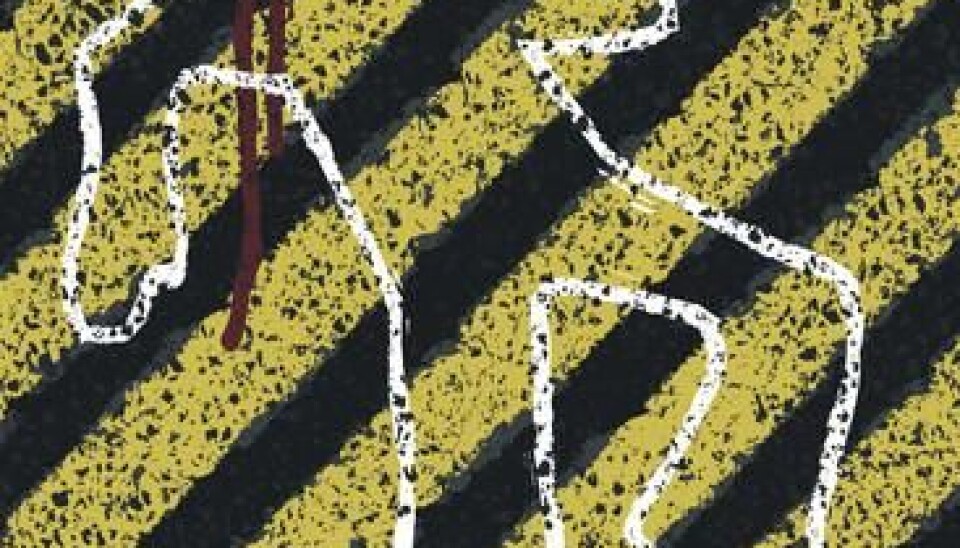
Alcohol behind Finland's high homicide rate
There are twice as many murders in Finland as in Sweden, and most of the Finnish perpetrators were drunk. But there are fewer victims of organised crime in Finland than in Sweden and the Netherlands.
Homicide statistics from Sweden, Finland and the Netherlands reveal significant differences in alcohol-related killings, weapon use and organised crime, and the overall prevalence of murder.
"Finland has more than twice as many murders than we have in Sweden," says Johanna Hagstedt, co-author of the study and researcher at The Swedish National Council for Crime Prevention. "In that regard they are more similar to Eastern European countries than the Western part of the continent."
"The perpetrators in Finland are typically adult men who are socially marginalised and who have developed an addiction to alcohol," she says.
A new cross-cultural study looked at the murder rates and characteristics of in the three countries, which share many similarities. The data was gathered in a statistical database and includes all cases of lethal violence during the years 2003-2006, not counting suicides, self-defense cases and lethal accidents.
Finland stands out
A total of 491 persons were killed in Finland during the four years, while it was 820 in the Netherlands and 355 in Sweden. Adjusted for differences in population size, Finland's murder rate was by far the highest – it was 85 percent higher than the Dutch rate and 140 percent higher than in Sweden, as measured by the amount of murders per 100,000 people.
Over 82 percent of the perpetrators in Finland were intoxicated by alcohol in the act of murder, and 39 percent were described as alcoholics. In Sweden, a little more than half of all murderers were intoxicated, and a similar proportion of them were considered alcoholics.
The differences between the two countries was especially large in cases where both the victim and perpetrator were drunk.
"In Sweden the drinking pattern has changed, people have replaced hard liquor with wine and beer, but Finland is lagging behind a bit in that regard," says Hagstedt.
Data on the prevalence of alcohol consumption and homicide in the Netherlands was not available.
More guns in the North, but more gunshot deaths in the Netherlands
Gun ownership is restricted in all three countries and people with criminal records are barred from obtaining firearm licenses. But guns are not uncommon in Finland and Sweden, where hunting is popular, while the Netherlands has the least number of registered guns. But the latter country is also, ironically, where the most people get shot.
In Sweden and Finland, 45 and 42 percent of all murders were committed with knives and other sharp instruments, while only 17 and 16 percent were committed with firearms. In the Netherlands, gunshots accounted for 35 percent of all killings.
Hagstedt adds that data on illegal guns was not available, and that the true picture of gun prevalence might be different.
More organised crime in the Netherlands
Hagstedt says it appears to be more organised crime and for-profit motives behind murders in the Netherlands.
Twenty-eight percent of the murders in the Netherlands belonged in the categories 'criminal milieu' or 'robbery'. In Sweden, 20 percent of the murders were of this nature, while the tally was only 6 percent in Finland.
This offers an explanation for the between-country differences in gunshots deaths – Hagstedt says guns are more likely to be used in instrumental murder cases, while for the impulsive, affective kind, perpetrators often turn to kitchen knives or other easily available objects.
The differences in organised crime and for-profit motives might also have something to do with the typical location of murders, which differ between the three countries.
In the Netherlands, most lethal violence occurs in cities and urban environments, while in Finland most murders take place in rural areas and small villages. Sweden is between the two – here, murders happen across the board.
The murderer is seldom a stranger
“The horror stories from the news are rare,” says Hagstedt. “It is very seldom that someone is murdered by a stranger. Usually the victim knows the perpetrator.”
She adds that murder is an “in-group phenomenon,” which means that victims and perpetrators are often quite similar to one another – they are typically of the same background, gender and age.
Hagstedt and her colleagues also found that men were in all countries by far the most likely to be both victims and perpetrators of murder.
In Sweden the victims of homicide were male in 63 percent of all cases, while it was 68 and 72 percent for the Netherlands and Finland, respectively.
Despite all the differences in murder patterns, the three countries shared one statistic: about one-third of all homicides were domestic, often between intimate partners.







